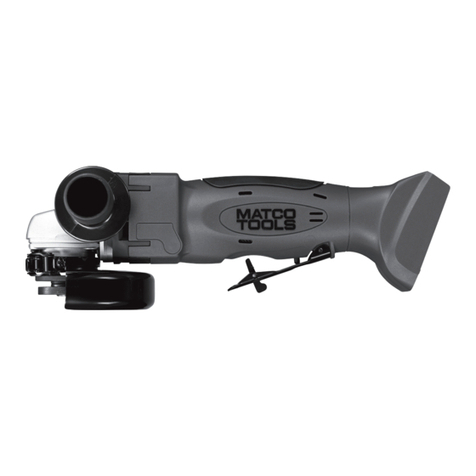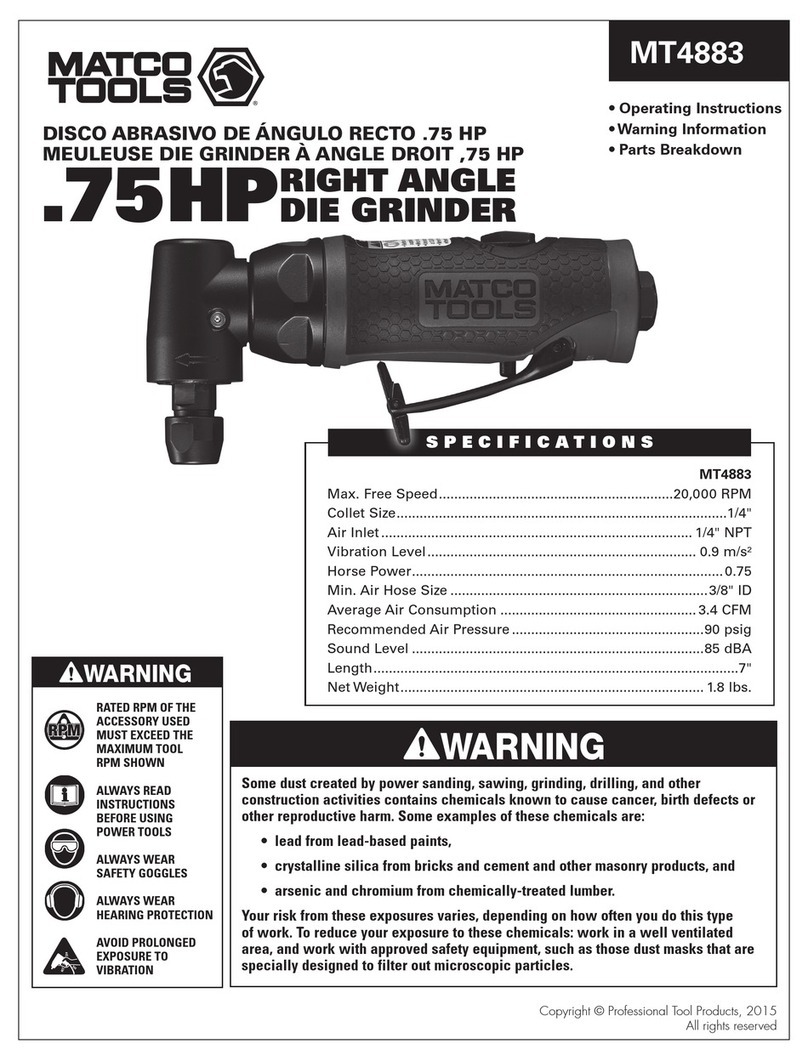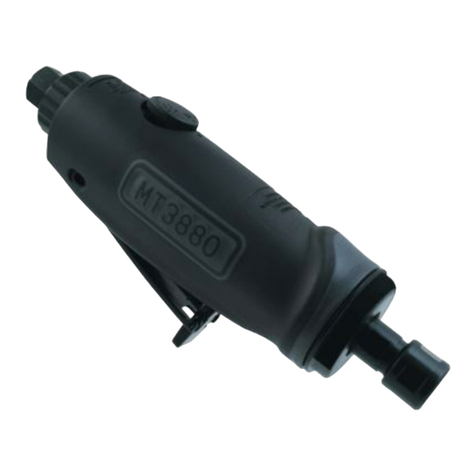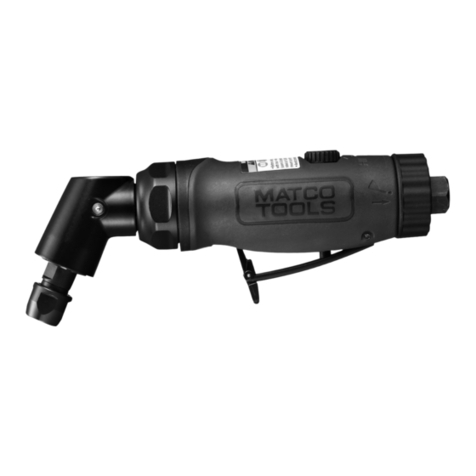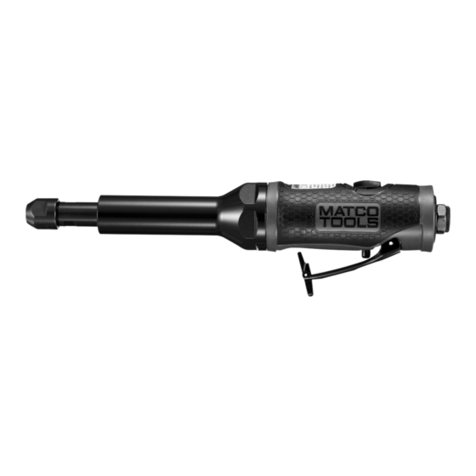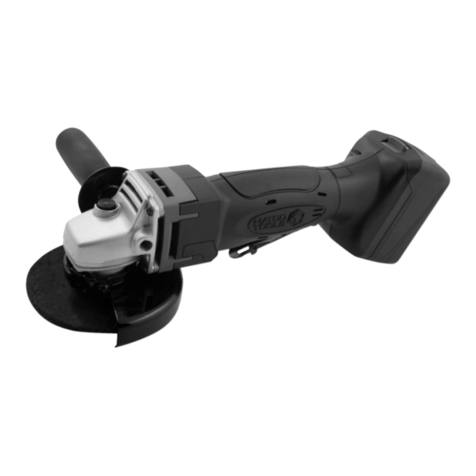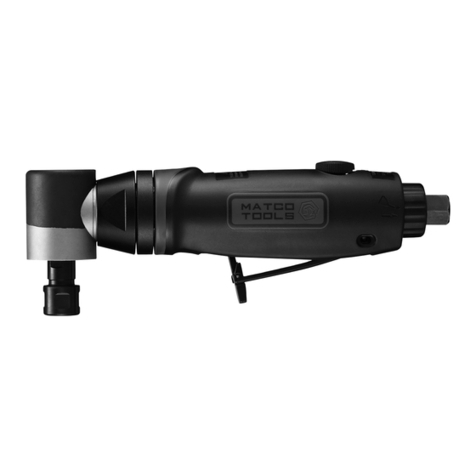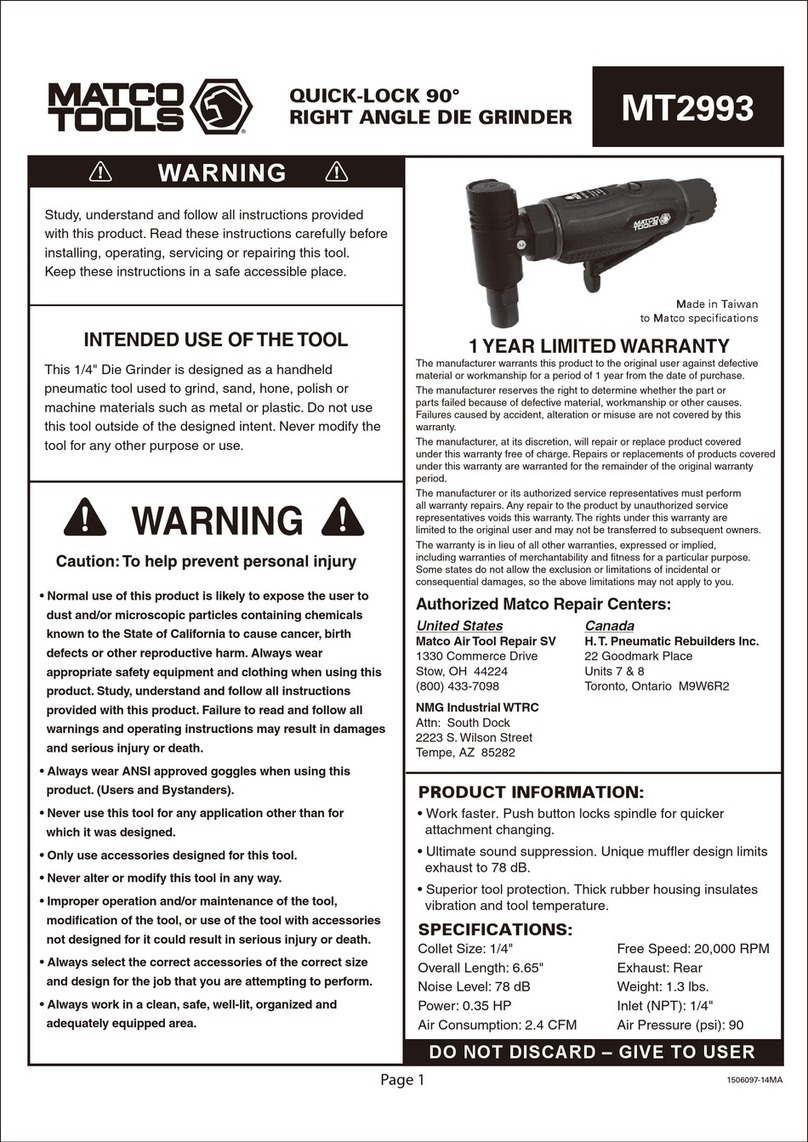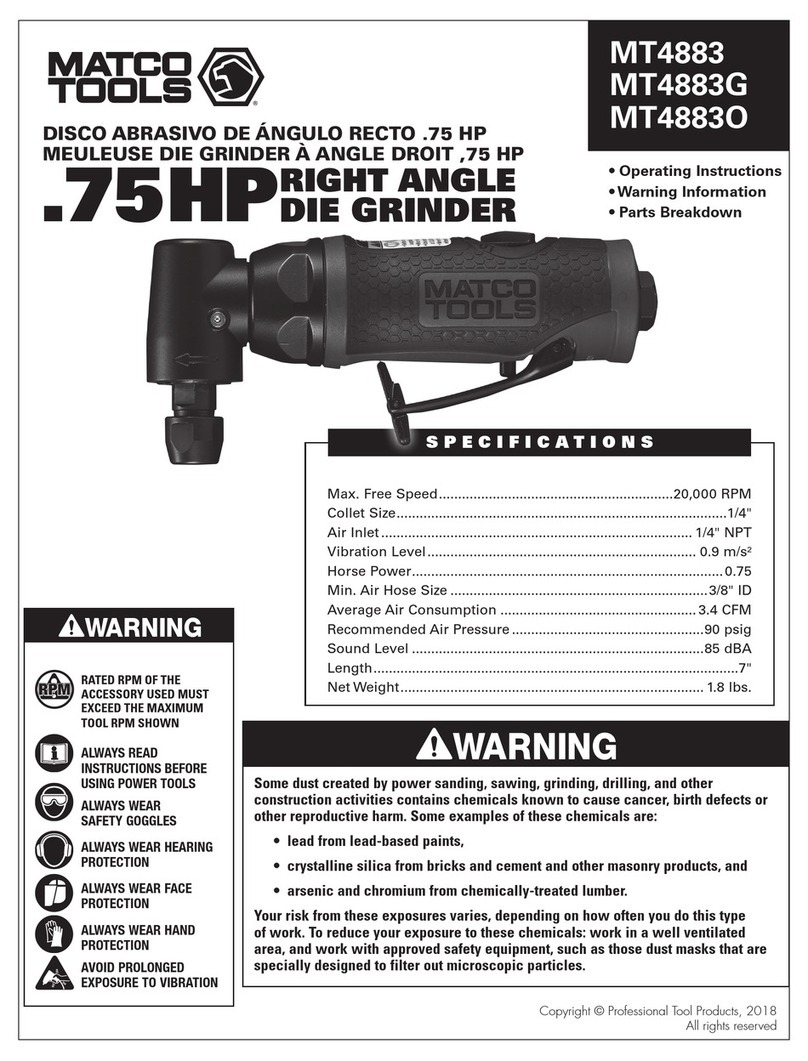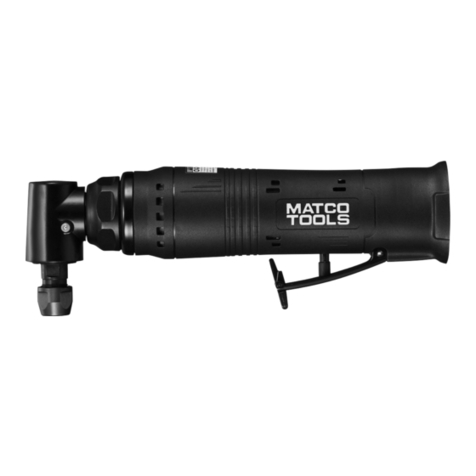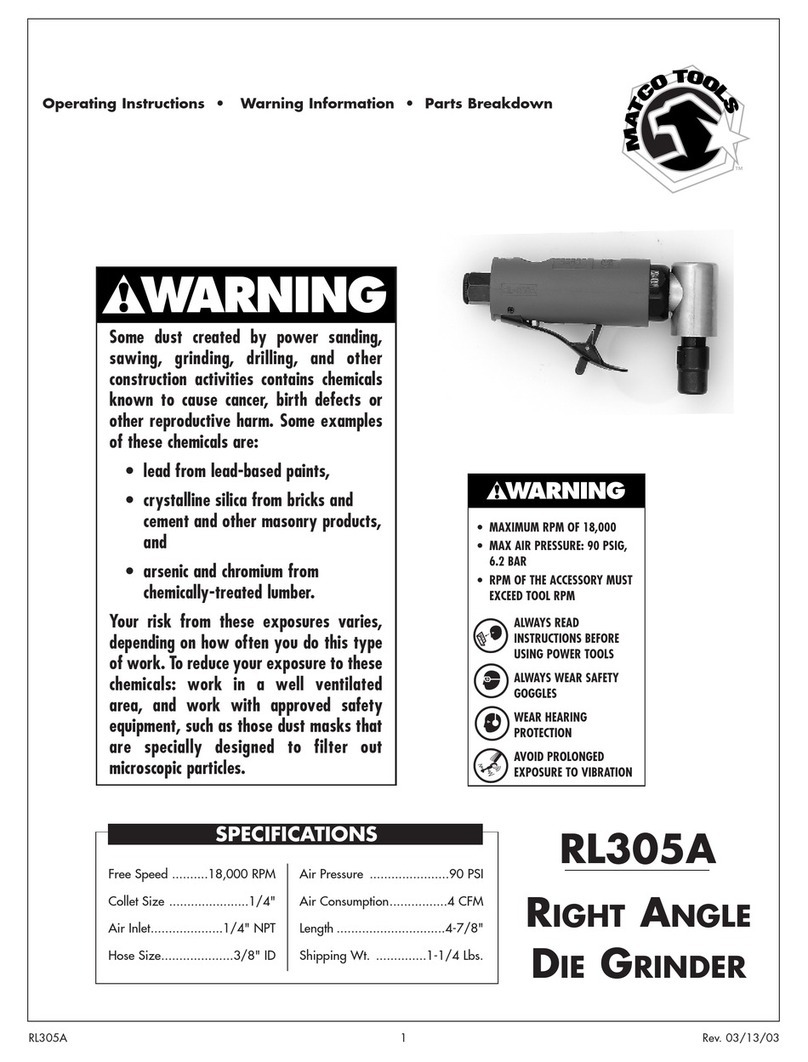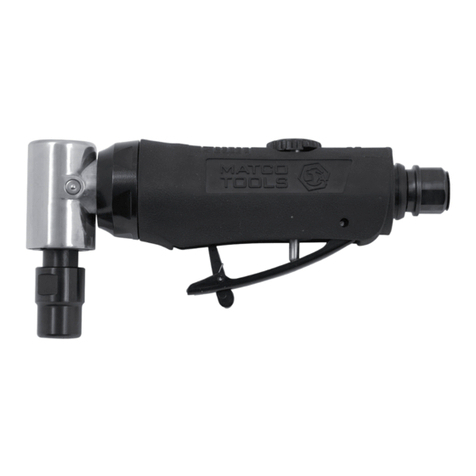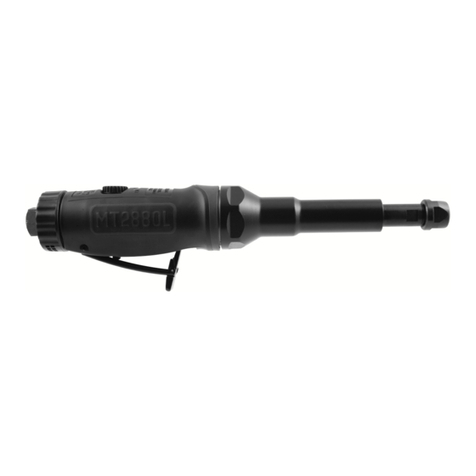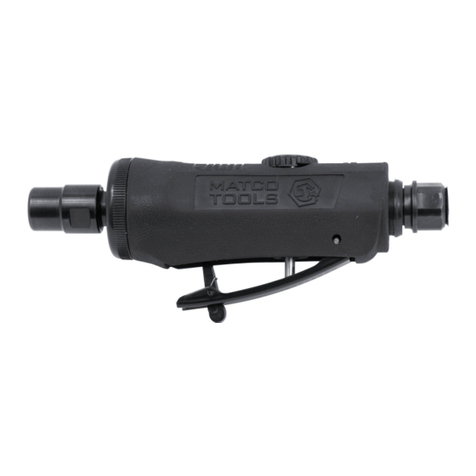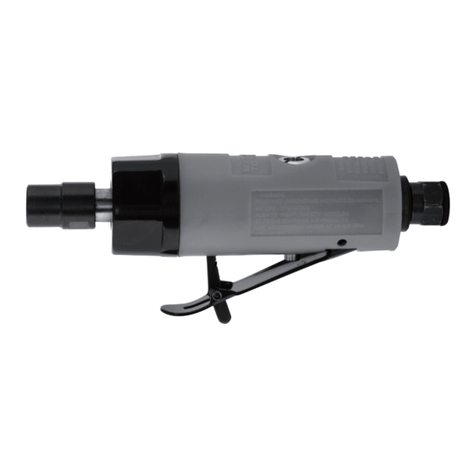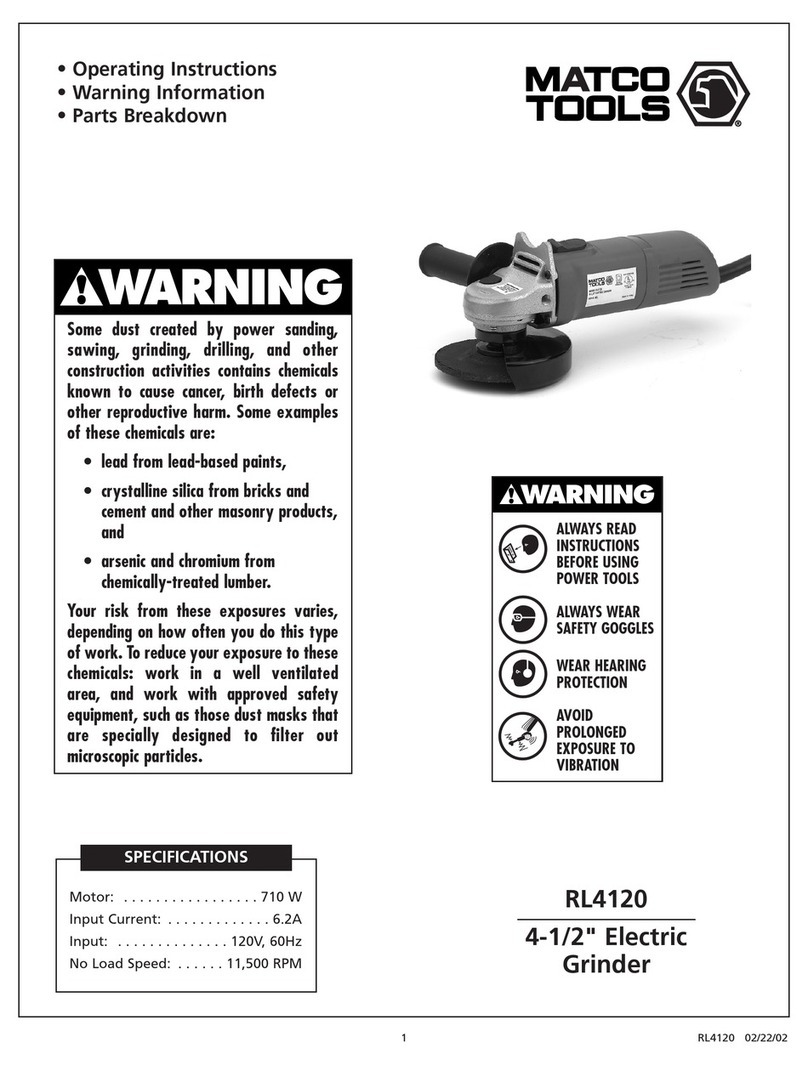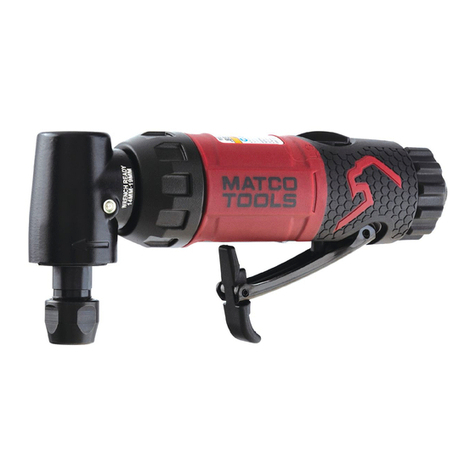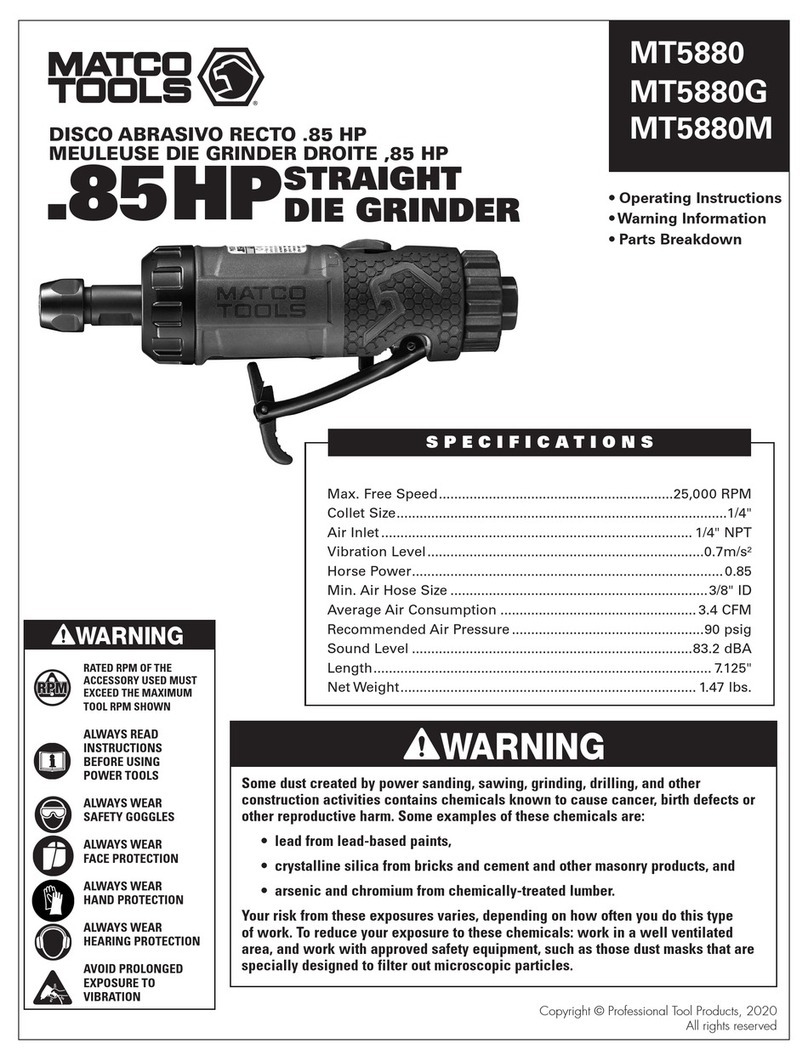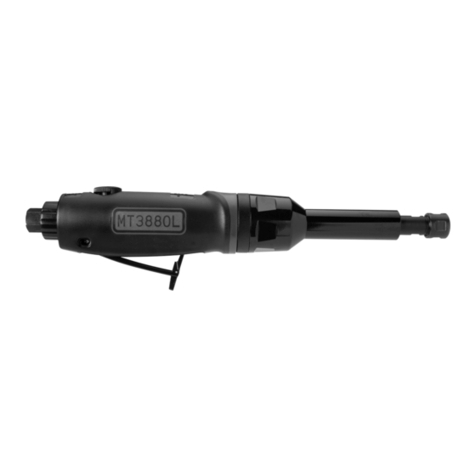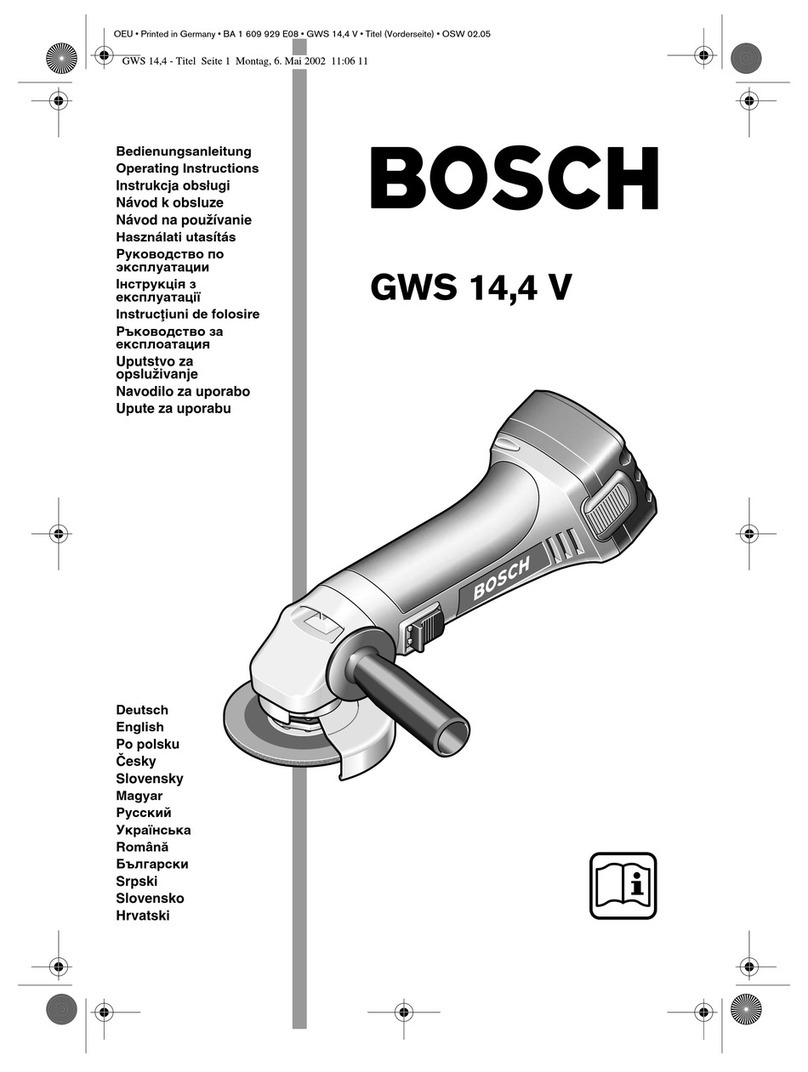RL-450 2 Rev. 08/06/03
THIS INSTRUCTION MANUAL CONTAINS
IMPORTANT SAFETY INFORMATION.
READ THIS INSTRUCTION MANUAL
CAREFULLY AND UNDERSTAND ALL
INFORMATION BEFORE OPERATING
THIS TOOL.
•Always operate, inspect and maintain
this tool in accordance with American National
Standards Institute Safety Code of Portable Air Tools
(ANSI B186.1) and any other applicable safety
codes and regulations.
•For safety, top performance and maximum
durability of parts, operate this tool at 90 psig 6.2
bar max air pressure with 3/8" diameter air supply
hose.
•Always wear impact-resistant eye and face
protection when operating or performing
maintenance on this tool. Always wear
hearing protection when using this tool.
•High sound levels can cause
permanent hearing loss. Use hearing
protection as recommended by your
employer or OSHA regulation.
• Keep the tool in efficient operating
condition.
• Operators and maintenance personnel
must be physically able to handle the bulk, weight
and power of this tool.
•Air under pressure can cause severe injury.
Never direct air at yourself or others. Always turn off
the air supply, drain hose of air pressure and detach
tool from air supply before installing, removing or
adjusting any accessory on this tool, or before performing
any maintenance on this tool. Failure to
do so could result in injury. Whip hoses
can cause serious injury. Always check
for damaged, frayed or loose hoses and
fittings, and replace immediately. Do not
use quick detach couplings at tool. See instructions
for correct set-up.
•Air powered tools can vibrate in use. Vibration,
repetitive motions or uncomfortable positions over
extended periods of time may be harmful to your
FAILURE TO OBSERVE THESE WARNINGS COULD RESULT IN INJURY.
hands and arms. Discontinue use of
tool if discomfort, tingling feeling or
pain occurs. Seek medical advice before
resuming use.
• Place the tool on the work before
starting the tool.
•Slipping, tripping and/or falling while operating air
tools can be a major cause of serious injury or
death. Be aware of excess hose left on the walking or
work surface.
• Keep body working stance balanced
and firm. Do not overreach when operating
the tool.
• Anticipate and be alert for sudden
changes in motion during start up and
operation of any power tool.
•Do not carry tool by the hose. Protect the hose from
sharp objects and heat.
•Tool shaft may continue to rotate briefly after throttle
is released. Avoid direct contact with
accessories during and after use. Gloves will
reduce the risk of cuts or burns.
•Keep away from rotating end of tool. Do not wear
jewelry or loose clothing. Secure long hair. Scalping
can occur if hair is not kept away from tool and
accessories. Choking can occur if neckwear is not
kept away from tool and accessories.
• Correct grinding wheel mounting is
necessary to prevent injury from
broken wheels. Do not use chipped or
cracked grinding wheels. Grinding
wheels should be a free fit on the
spindle to prevent stress at the hole. Use only wheel
collars that come with the grinder for mounting the
grinding wheel. Flat washers or other adapters may
over stress the wheel. Always use heavy paper
blotter discs between the wheel collars and the
grinding wheel. Tighten the wheel on the spindle to
prevent spin off when the air grinder is turned off.
•Do not lubricate tools with flammable or volatile liquids
such as kerosene, diesel or jet fuel.
•Don’t force tool beyond its rated capacity.
•Do not remove any labels. Replace damaged labels.


